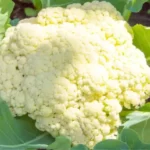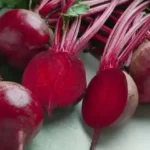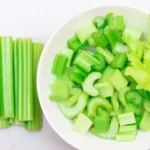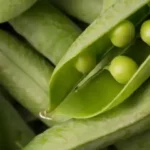Greetings, fellow growers! Are you looking for effective ways to enhance your corn plants’ growth while improving taste and yield? If so, it’s time to explore this age-old practice and discover the best companion plants for corn.
In this article, we will discuss the fantastic benefits of this traditional gardening technique and how it can boost your corn’s performance growing right in your own backyard. I have carefully curated a list of companion plants to maximize your corn’s potential and elevate your garden’s success.
For optimal growth, it’s best to grow corn with companion plants like beans, squash, Borage, cucumber, peas, dill, thyme, sunflower, marigold, nasturtium, and melon. To avoid potential detrimental effects on your corn, you’ll also want to avoid growing cabbage, eggplant, fennel, and tomatoes near your corn.

Gardening is an absolute joy, and I am thrilled to share my personal experience on companion planting for growing great corn, a staple crop among many dedicated home gardeners.
I’ll provide a comprehensive guide that includes recommended companion plants for your crop, a list of those you should steer clear of, and the reasoning behind it.
Whether you’re an experienced gardener or just beginning your gardening journey, corn can be tricky to grow consistently. If you want to boost the health of your corn, this article provides the companion planting skills you’ll need to cultivate the best corn in your garden.
Humble Highlights
- Save money by learning how to effectively rotate your crops through companion planting so you can help protect your vegetable plants from unwanted diseases, weeds, and harmful insects.
- Discover the 12 best companion vegetables and flowers to grow sweet and crunchy backyard corn so you can become everyone’s most popular neighbor come summertime!
- Know the 4 central plants you should avoid growing near your corn patch so you can keep your cobs healthy and pest free.
What Is Companion Planting
Companion planting involves cultivating two or more plants for improved growth and quality. This age-old practice offers maximum ground coverage and improved soil conditions and helps repel unwanted pests who seek to devour your garden plants.

When starting a garden, thoughtful planning is required when deciding on the placement of your prized vegetable plants. Despite a lack of scientific explanation, a wealth of anecdotal evidence by gardeners suggests companion planting is quite effective. Through years of experience, gardeners from all walks of life have discovered that certain plants do better when placed together in a companionable manner.
Companion planting is a dynamic and effective way to cultivate a healthy and thriving garden. Although this gardening technique requires a bit of effort and dedication, the resulting outcome is well worth investing some of your time and energy.
With a positive attitude, patience, and a willingness to learn, you can achieve the perfect garden through companion planting. And by choosing the right combination of plants, companion planting will not only boost the health and productivity of your garden but also create a prospering ecosystem that can have you seeing the benefits for seasons to come. 1
Check Lowest Prices On Companion Planting Books Now
What Are The Benefits Of Companion Planting
There are several valuable benefits of companion planting, including:
- Maximizing Soil Fertility Through Crop Rotation
- Pollinator Attraction
- Root Work
- Enhancing Flavor
- Nitrogen-Fixation: From Atmospheric Nitrogen Into Plant-Usable Form
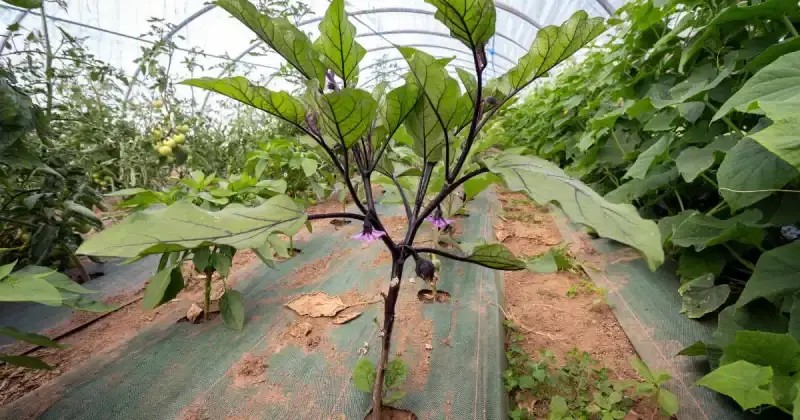
Let’s get into each of these companion advantages in a bit more depth.
Maximizing Soil Fertility Through Crop Rotation
By alternating the crops you plant each year (crop rotation) and pairing them with complementary species (companion planting), you can promote a thriving and robust garden environment less susceptible to weeds and diseases. When rotating the location of your crops, you can prevent the buildup of soil-borne pathogens and reduce the risk of pest and disease problems.
Additionally, rotating your crops can help improve soil fertility, as different crops require different nutrient conditions, which can help balance the soil. 2
Finally, incorporating companion planting into your gardening routine is a great way to suppress diseases and reduce weeds’ growth. Growing a diverse range of plant species together creates a more balanced ecosystem that helps create an unfavorable environment for diseases and weeds to take charge, ultimately saving you time and much less hair-pulling.
When you create a balance between reduced humidity, increased airflow, and ample shade within your garden, you can also significantly impact the health and vitality of your garden soil. Not only will your plants grow stronger and healthier, but you will also have fewer disease and weed problems as a result of your prior planning.
Pollinator Attraction
Companion planting helps certain plants attract beneficial insects like bees and butterflies that help pollinate your crops and, in turn, boost your yields. For example, planting flowers and herbs like lavender, rosemary, and sunflowers help invite these beneficial insects, which are crucial in pollinating and increasing your garden’s productivity.
In addition, you can also attract beneficial pests like wasps (yes, wasps) and birds that can help to keep grubs and other harmful garden pests under control. Nearly all bird species feed their young primarily with a diet of insects. With a little thought, you too can create a beautiful and productive garden by fostering a diverse environment and attracting nature’s natural tools and resources to work on your behalf.

Root Work
Another common benefit of companion planting is the interplay between the roots of the different plants. The root systems of your vegetable plants release secretions that can positively affect neighboring plants and soil organisms, leading to improved growth and overall health of the plants flourishing in your garden. This interdependence among plants can also reduce resource competition and help prevent soil-transmitted diseases.
Growing various plants with different root systems allows these systems access to other parts of the soil, allowing for greater use of the soil’s resources and ultimately leading to a more productive and healthy garden.
Here’s an excellent video I found on YouTube that reviews and discusses many wonderful benefits of saving space and improving your garden through companion planting.
Enhancing Flavor
Herbs and vegetable plants are often paired together in companion planting as they have been found to positively enhance each other’s growth and flavor.
For instance, basil planted near tomatoes has been shown to enhance the flavor of tomatoes. Another common combination is bee balm and German chamomile, which has a potent aroma that stimulates the growth and taste of cabbage, cucumber, and onion when grown in close proximity to them.
Nitrogen-Fixation: From Atmospheric Nitrogen Into Plant-Usable Form
Nitrogen fixation refers to transforming molecular nitrogen (N2) from the air into nitrogen compounds beneficial for other metabolic processes. This process can be done in several ways, including natural processes such as lightning strikes, artificial industrial processes, and the action of microorganisms in the soil itself. 3
Biological nitrogen fixation is a critical process for plants, allowing them to access vital atmospheric nutrients. Through this process, nitrogen-fixing bacteria convert atmospheric nitrogen gas (N2) into a form the plants can use. However, this ability to obtain nitrogen in this manner is limited to only a few notable plant species, which rely on the help of soil microorganisms to carry out this action.
This entire procedure occurs in certain plants’ roots and the soil where the bacteria reside. Plants can then use the nitrogen compounds produced by the bacteria to grow and establish healthy, robust root systems.
Overall, nitrogen fixation is crucial for plants’ growth and productivity and for maintaining the environment’s nitrogen cycle.
Companion Plants For Your Corn
There are several common corn companion plants, including:
- Pole Beans
- Squash
- Sunflower
- Amaranth
- Marigolds
- Nasturtiums
- Melon
- Peas
- Thyme
- Borage
- Cucumber
- Dill
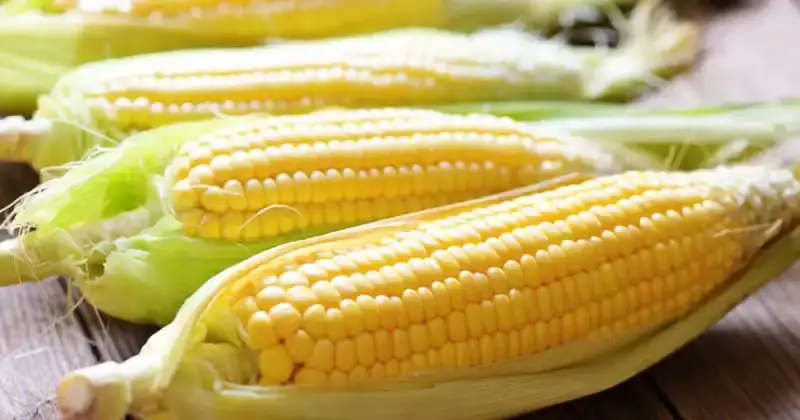
Let’s take a closer look at each to see their companion benefits.
The Three Sisters: Corn, Pole Beans, And Squash
Corn, pole beans, and squash are known as the “Three Sisters.” Each one of these three vegetables contributes positive attributes to each other and to companion planting in general.
The interplanting of corn, pole beans, and squash provides a mutually beneficial relationship. The stalks of the corn support the climbing beans. Meanwhile, the beans give the corn the nitrogen needed for optimal growth and deter the damaging corn earworm moth. Lastly, the squash provides welcome shade that inhibits garden weeds while helping the soil retain moisture. 4
Traditional winter squash varieties can produce vines up to 15 feet long, making ample space essential for their growth. However, if you have limited space, such as with a raised bed garden, choosing more compact summer squash varieties like zucchini is recommended for the best results.
Check Lowest Prices On Corn Seeds Now
Cluster the “Three Sisters” (corn, pole beans, and squash) on low, wide mounds instead of planting them in a single row. In other words, group the plants together on small raised mounds instead of growing them in a single line. The idea is to make the most efficient use of the available space within your garden bed while also promoting the health and growth of the plants.
Other Sisters: Sunflower And Amaranth
Sunflowers and amaranth have been shown to impact your corn crop’s overall yield and productivity significantly. This benefit is achieved by attracting pollinators such as bees and butterflies, which are vital in pollinating corn. 5
The presence of these pollinators in the vicinity of the sunflowers has shown an increased pollination rate, leading to a higher quantity of produce and a more robust crop overall. Thus, sunflowers and amaranth are friendly neighborhood companions in optimizing a generous corn harvest.
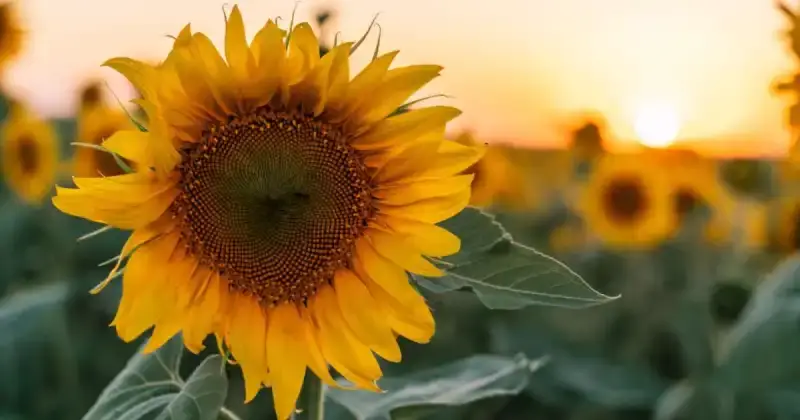
Additionally, sunflowers and amaranth help keep birds away from the corn seeds, reducing the risk of seed predation and ensuring that the corn has a better chance of germinating and growing successfully. In return, corn enhances the flavor of sunflower seeds.
While birds make a great natural garden deterrent by eating insects that would otherwise harm your plants, it’s best to keep birds out of your corn patch. As a responsible grower, you’ll have to weigh the pros and cons of inviting birds into your garden space.
Marigolds, Nasturtiums (Asteraceae)
Marigolds and nasturtiums are excellent choices as corn companions. These two beautiful flowers are essential for gardeners because of their ability to repel or trap pests. Both marigolds and nasturtiums have been proven to effectively repel aphids, including corn aphids and other pests that can seriously damage and ultimately kill your corn crop.
Not only do marigolds and nasturtiums protect the corn, but they also attract beneficial bugs such as ladybugs, lacewings, and other predators that prey on common garden pests. This interrelationship creates a win-win situation, where these flowers act as natural pest control and help to maintain a healthy balance in your garden’s ecosystem.
Check Lowest Prices On Marigold Seeds Now
The below video is an excellent resource that reviews some of the most common and popular corn companion plants that can help you grow some delicious backyard kernels.
Melon (Cucurbitaceae)
Melons make great companion plants for corn as they provide adequate shade cover by maintaining soil moisture and promoting a healthy and effective prevention of weeds. This combination of corn and melons produces a flourishing, flavorful, and delicious corn crop.
The cover provided by the melons helps regulate the temperature of the soil, keeping it cool and moist and allowing the corn to grow to its fullest potential. The presence of melons also attracts pollinators and other beneficial insects, leading to an overall increase in the yield of both crops. 6
Peas (Leguminosae)
Peas, another legume, are highly effective in fixing nitrogen in the soil, making them an ideal companion plant for corn. To take advantage of their nitrogen-fixing capabilities, plant peas as early as possible in spring (as soon as your soil has thawed) before sowing corn. You can plant corn seeds directly into the pea bed as a practical space-saving approach.
Another reason peas are a friendly neighbor is that corn is a heavy-feeding crop. Like many plants, corn needs adequate levels of nitrogen. Therefore, it is wise to grow nitrogen fixers near your corn plants, like peas in this case. Also, since your peas will be harvested before your corn, you can save valuable garden space by planting your corn seeds right in the middle of your rows of peas.
Check Lowest Prices On Pea Seeds Now
Thyme (Lamiaceae)
Thyme is a beneficial herb to grow alongside corn because it repels the corn earworm. These pests absolutely despise the scent of thyme, making it an ideal herb to include in your garden as it can save you some severe headaches that these little pests can cause. You can protect your corn plants by growing thyme while enjoying this delicious and fragrant herb.
Borage (Boraginaceae)
With its attractive star-shaped blooms and ability to provide plants with organic potassium, calcium, and other essential minerals, Borage is a valuable asset to any garden. Not only does this attractive flower enhance the beauty of your garden with its beautiful blossoms, but it also serves as a key player in improving the health of your crops. 7
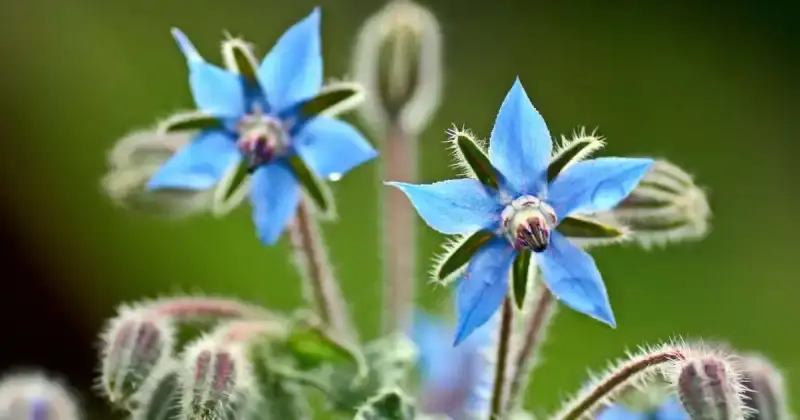
By attracting beneficial insects such as bees and predatory insects, Borage helps protect corn from various pests and diseases that might otherwise harm your plants. Furthermore, like marigolds and nasturtiums mentioned above, Borage can also deter harmful pests such as cabbage and tomato worms.
Check Lowest Prices On Borage Seeds Now
Cucumbers (Cucurbitaceae)
Planting cucumbers and corn together can be a match made in heaven for your vegetable garden. As vining plants, cucumbers tend to spread out and provide beneficial soil shade for your corn plants, which can help crowd out weeds. This extra shade also helps maintain soil moisture and temperature, creating ideal growing conditions for both plants.
Additionally, the humble cucumber offers a protective barrier for your corn against pests like the notorious corn earworm. In return, corn provides the necessary cover and shade that cucumbers require to flourish.
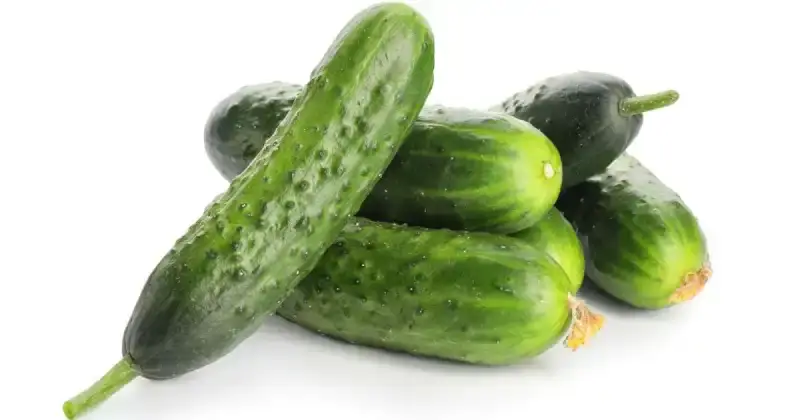
Dill (Apiaceae)
Dill is an aromatic herb that not only emits a pleasant fragrance to your garden but also has a positive effect on your corn plants. Dill is a magnet powerhouse for beneficial insects, such as bees, butterfliles, ladybugs, and helpful wasps, which can keep pests like corn earworms, cutworms, and aphids at bay. So, if you are growing corn, consider planting some dill nearby and put Mother Nature to work on your garden’s behalf.
Check Lowest Prices On Dill Seeds Now
While growing dill benefits your corn, you must wait until your corn plants have sprouted at least four inches before planting so it doesn’t block the sun. Corn loves all the natural light it can get. So be sure your dill is planted after your corn, or, alternatively, you can grow dill in pots and move the containers around your garden as you see fit.
Plants To Avoid Growing Near Corn
There are several plants you’ll want to avoid growing with corn, including:
- Cabbage
- Eggplant
- Fennel
- Tomatoes
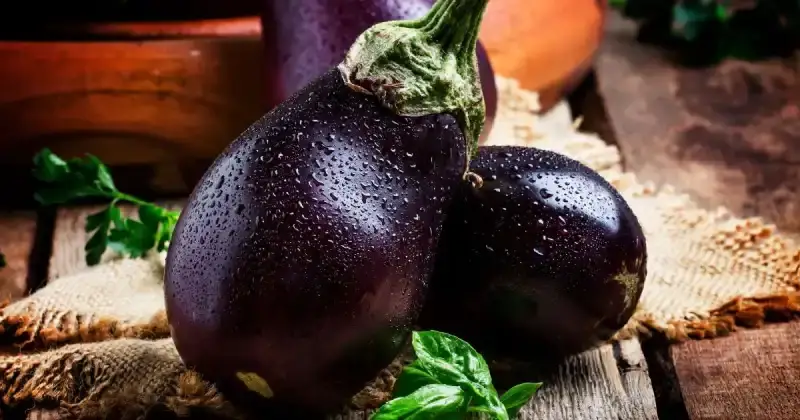
Having discussed the benefits of companion planting, it’s also essential to consider potential drawbacks. Corn, a staple crop in many cultures, is a delicate plant susceptible to invasive pests and diseases. As such, special care must be taken when selecting companion plants to ensure that they complement the health of your corn crop. 8
Cabbage
For brassica crops, including broccoli, cauliflower, and cabbage, it is recommended to grow these plants away from corn as brassicas require adequate sunlight to thrive. As the corn grows, its stalks shade the immediate space around the base of the plant. And even though brassicas can tolerate some shade, the slender stalks of corn provide too much shade for these types of vegetables, which could stunt their growth.
Additionally, corn and brassica crops require similar nutrients and attract the same pests, leading to competition for resources and an increased risk of pest problems. Fortunately, you can still grow your corn and cabbage simultaneously. Just ensure they are on opposite ends of your garden.
Eggplant
Eggplants may not be the best companion plants for corn, as they are known to attract the same damaging pests invasive to both species, such as the hornworm. These pests can quickly transfer from eggplant to corn, damaging both extensively.
Hence, planting crops that do not share similar pest problems in the same garden is advisable to prevent any negative impact on their growth and productivity. However, I realize this isn’t always possible, especially if space is tight. Therefore, if sowing your eggplant in a different garden area isn’t practical, consider growing only eggplant or corn during the season.
Fennel
Fennel is another plant that is not a suitable corn companion plant as it is known to have a detrimental effect on other plants growing nearby. Fennel is infamous for stunting the growth of surrounding vegetation and, in some cases, causing their demise. For this reason, it is best to grow fennel by itself and avoid planting it close to other crops.
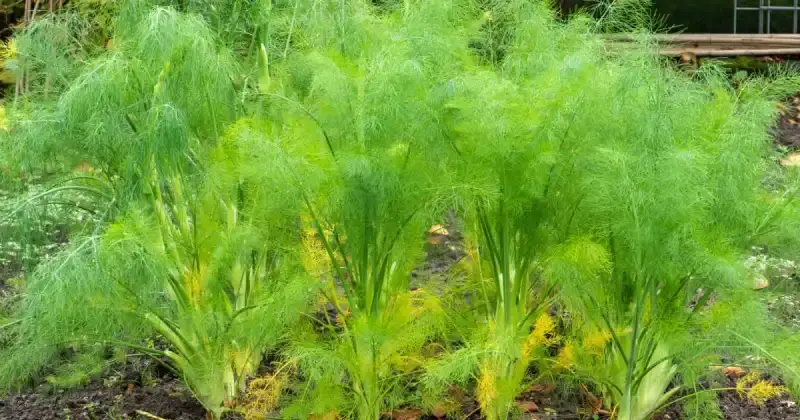
Tomato
Tomatoes attract the same pests as corn, such as the corn earworm and tomato hornworm. Plus, tomatoes and corn desire the same nutrients, and their roots will compete for them in your soil. 9
Thus, for maximum corn growth and yield, it is recommended to choose companion plants wisely and avoid those, like the ones mentioned above, that have the potential to interfere with corn’s nutrient intake, inhibit its growth, or attract similar pests.
Conclusion
Companion planting is an innovative and effective strategy for gardeners looking to improve their crops’ taste, productivity, and health. By planting friendly companions alongside each other, gardeners can reap the rewards of increased yields, healthier soil, and reduced pest problems.
While the exact reasons for the success of companion planting are still up for scientific debate, the results among many home gardeners speak for themselves. And as a responsible gardener, you must be open to new concepts if you have yet to employ the power of companion planting.
With the right combination of plants, such as corn and its friendly companions of beans, squash, Borage, cucumber, peas, dill, thyme, sunflower, and melon, gardeners can create a vibrant and fruitful garden.
Likewise, knowing what not to plant with your corn, like cabbage, eggplant, fennel, and tomatoes, are just as important. You’ll want to avoid these plants as they compete for nutrients and attract similar pests that eye up your corn like an all-night Vegas buffet.
Companion planting is a tried-and-true technique experienced gardeners have used for years, and its numerous benefits are too good to ignore. So what friendly companion plants have you had success with when planting corn? Let me know in the comments below!
SOURCES
- Iowa State University – Companion Planting: A Method For Sustainable Pest Control
- University Of Illinois Urbana-Champaign, College Of Agricultural, Consumer & Environmental Sciences – Companion Planting: Anecdotal Or Tried And Tested?
- Michigan State University, Extension – How To Grow Corn
- Nativeseeds.org – How To Grow A Three Sisters Garden
- North Carolina State University, Extension – Helianthus Common Name(s): Sunflower
- Weekand.com – Companion Flowers For Melons
- Wikipedia – Borage
- University Of New Hampshire, Extension – Corn Earworm [fact sheet]
- University Of Wisconsin, Extension – Hornworms

